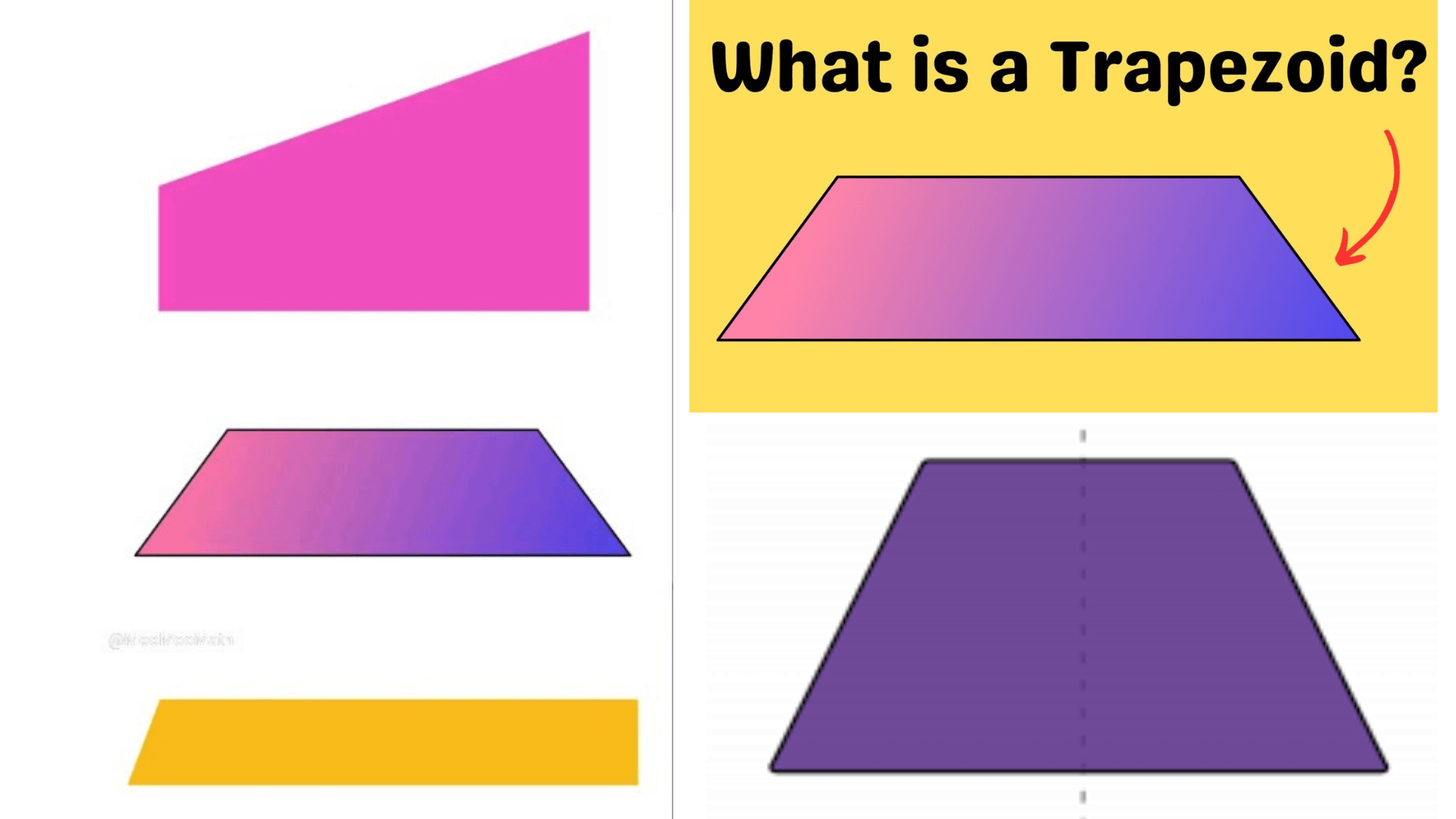A trapezoid, known in some regions as a trapezium, is a type of quadrilateral, which is a four-sided polygon. The defining feature of a trapezoid is that it has one pair of opposite sides that are parallel to each other. These parallel sides are referred to as the bases of the trapezoid, while the non-parallel sides are called the legs. Trapezoids can vary in shape and include special types such as the isosceles trapezoid, where the non-parallel sides are equal in length the angles at each base are equal, and the right trapezoid, which has two right angles.
Understanding Trapezoids
Basic Definition
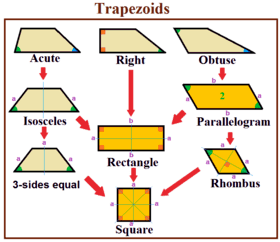
A trapezoid, also known as a trapezium outside of North America, is a type of quadrilateral that is characterized by having at least one pair of parallel sides. These parallel sides are referred to as the bases of the trapezoid. The non-parallel sides, known as the legs, can be of different lengths. The definition varies slightly depending on the region: in North American usage, a trapezoid is strictly defined as having exactly one pair of parallel sides, whereas in British English, any quadrilateral with at least one pair of parallel sides qualifies as a trapezium.
Key Characteristics
Bases and Legs
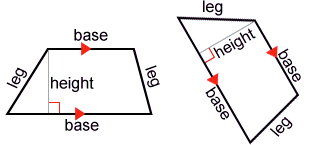
In a trapezoid, the term “bases” refers to the two parallel sides of the shape. These sides are the defining feature of trapezoids and are crucial for calculating properties such as area and perimeter. The “legs” of a trapezoid, on the other hand, are the two non-parallel sides. These can vary in length and may be perpendicular or slanted relative to the bases, depending on the specific type of trapezoid.
Angles in Trapezoids
In trapezoids, the angles have unique properties depending on whether the trapezoid is regular or isosceles.
1. Regular Trapezoid:
The angles adjacent to each base are called base angles. These angles are not necessarily congruent unless the trapezoid is isosceles.
2. Isosceles Trapezoid:
- This type of trapezoid has congruent legs and the base angles are also congruent. That is, each pair of base angles (angles sharing the same base) is equal to each other.
- An isosceles trapezoid also exhibits a line of symmetry that bisects its non-parallel sides and equals the angles of the bases.
Understanding these properties is important for solving problems involving trapezoids, particularly in determining angle measures and for proving congruence and similarity in geometric figures.
Varieties of Trapezoids
Isosceles Trapezoid
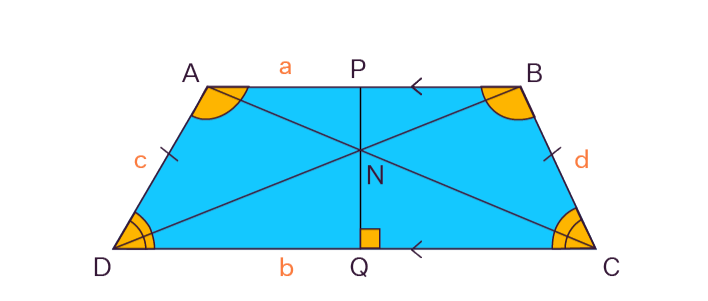
An isosceles trapezoid is a specific type of trapezoid that exhibits several distinct properties:
- Parallel Bases: It has one pair of opposite sides that are parallel, which are referred to as the bases. These bases are not equal in length.
- Congruent Non-Parallel Sides: The non-parallel sides, or legs, of an isosceles trapezoid are congruent (equal in length).
- Congruent Base Angles: The angles adjacent to each base are congruent. This means that the angles on the same side of the trapezoid are equal.
- Line of Symmetry: An isosceles trapezoid has a line of symmetry perpendicular to the bases, bisecting the trapezoid through its non-parallel sides.
These properties make the isosceles trapezoid a figure of symmetry and equal measure in several respects, important for geometric constructions and proofs.
Right-Angle Trapezoid
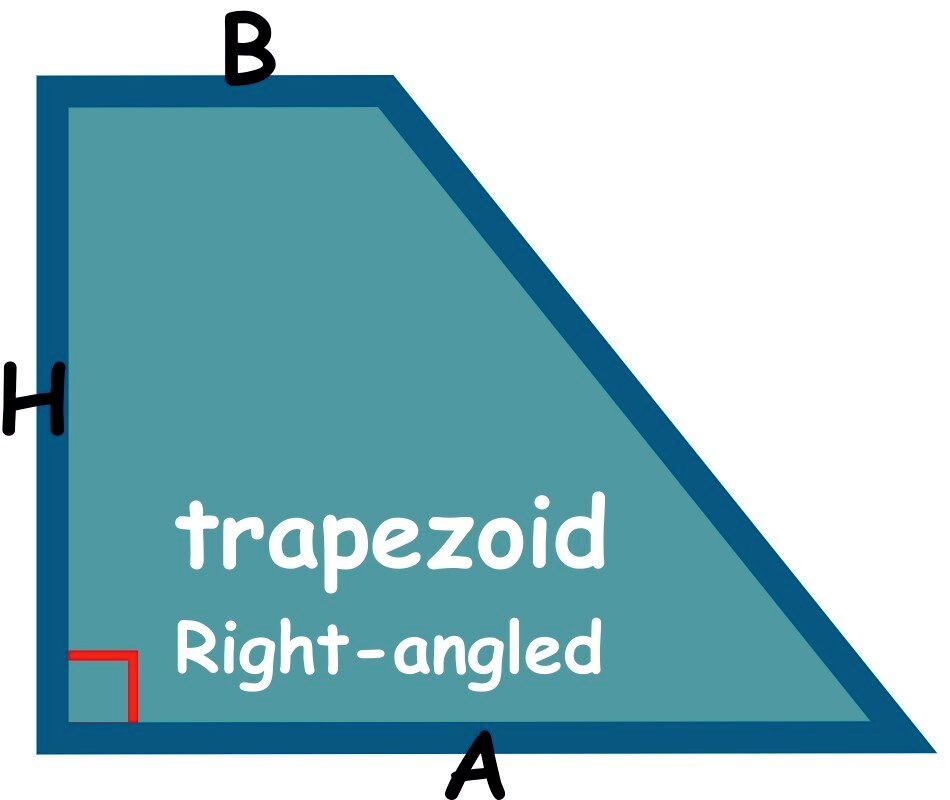
A right-angle trapezoid is a type of trapezoid that includes the presence of right angles as a defining characteristic. Here are its main features:
- Right Angles: A right trapezoid has at least one right angle at one of its bases, making it distinct from other trapezoid types. The term can also refer to trapezoids with two right angles, one at each of the non-parallel sides.
- Parallel Sides: Like all trapezoids, a right trapezoid has a pair of parallel opposite sides. These are considered the bases of the trapezoid.
- Generic Trapezoid Formulas Apply: All the generic formulas for calculating the properties of trapezoids, such as area, perimeter, and angles, are valid for right trapezoids as well.
- Special Cases: Interestingly, all rectangles can be considered right trapezoids by definition, as they possess two pairs of parallel sides and all right angles, making them a special case within this category.
These features make right-angle trapezoids a versatile topic in geometry, applicable in various mathematical problems and proofs.
Mathematical Principles Involving Trapezoids
Area Calculation
The area of a trapezoid can be calculated using a simple formula. The formula for the area A of a trapezoid is:
A = 1/2 × (b1+b2) × h
Where:
- b1 and b2 are the lengths of the two parallel sides (bases) of the trapezoid.
- h is the height of the trapezoid, which is the perpendicular distance between the two bases.
Example:
If a trapezoid has bases of 6 meters and 4 meters, and a height of 5 meters, the area would be calculated as follows:
A = 1/2 × (6+4) × 5 = 1/2 × 10 × 5 = 25
This method applies universally, regardless of whether the non-parallel sides are equal in length (as in isosceles trapezoids) or not.
Perimeter Calculation
The perimeter of a trapezoid is calculated by adding the lengths of all four sides. The formula for the perimeter P of a trapezoid is:
P = a+b+c+d
Where:
a, b, c, and d are the lengths of the sides of the trapezoid. In a trapezoid, a and b are typically the parallel sides, while c and d are the non-parallel sides.
Example:
For a trapezoid with sides measuring 5 meters, 7 meters, 3 meters, and 6 meters, the perimeter would be:
P = 5 + 7 + 3 + 6 = 21 meters
This simple addition of side lengths gives the total distance around the trapezoid.
Trapezoids in Architecture and Engineering
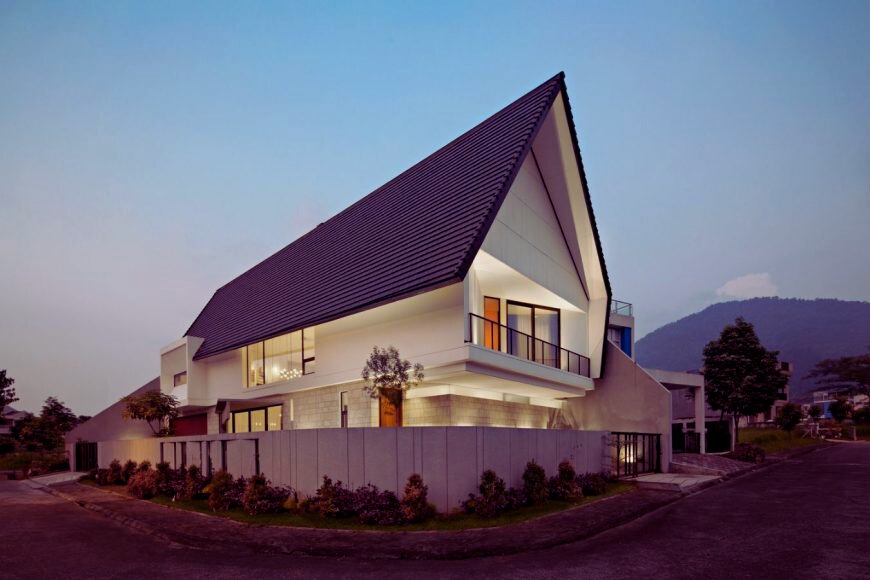
Trapezoids are frequently utilized in architecture and engineering due to their unique geometric properties and aesthetic appeal. Examples include:
- Mixed-Use Buildings: The “Trapezoid” by buildingstudio is a mixed-use structure with ground-floor commercial space and upper-story apartment units. The use of trapezoidal forms maximizes space and adds a dynamic visual element to urban settings.
- Arts Centers: Steven Holl’s art center at the University of Pennsylvania features trapezoidal shapes that create a sense of floating. This innovative use of geometry not only enhances the building’s visual impact but also contributes to its functionality by modulating light and space.
- Temporary Pavilions: Trapezoidal patterns are employed in the design of temporary pavilions, which serve as experimental platforms for architects. These structures often explore new ideas in design and materials, utilizing trapezoidal forms for both aesthetic qualities and structural efficiency.
Trapezoids offer structural benefits such as increased stability and resistance to lateral forces, making them valuable in various architectural contexts.
Learning and Teaching Trapezoids
Educational Challenges
Understanding and teaching the concept of trapezoids presents several challenges in education, influenced by factors such as teaching methodologies and the materials used:
- Conceptual Understanding: Research shows that students’ perceptions of trapezoids can vary significantly, influenced by how the concept is introduced and reinforced in lower secondary education. This variability can affect their long-term understanding of geometrical concepts.
- Teaching Styles and Materials: The teacher’s approach and the textbooks or resources used can greatly impact how well students grasp and retain the concept of trapezoids. Diverse teaching styles and quality of materials can either enhance or hinder student understanding.
- Practical Engagement: Activities that involve identifying and constructing trapezoids help in reinforcing the concept. However, the effectiveness of these activities depends heavily on the interaction and the questioning techniques used by the teacher during the process.
These challenges underscore the importance of tailored teaching strategies and the use of effective educational tools to foster a better geometric understanding among students.
Strategies for Effective Teaching
Effective teaching of trapezoids in geometry can be achieved through various educational strategies designed to engage and educate students at different levels:
- Sorting Activities: Introducing trapezoids through sorting activities helps students differentiate trapezoids from other quadrilaterals. This method supports visual and hands-on learning, making it easier for students to grasp the concept.
- Real-life Examples: Using real-life examples of trapezoids allows students to see the relevance and application of geometry in their surroundings. This connection helps enhance student interest and understanding of the shape’s properties.
- Formula Application: Practicing the area formula with sample trapezoids can clarify the mathematical principles involved, providing a practical approach to learning geometry. This method reinforces theoretical knowledge through application.
- Exploratory Learning: Encouraging students to explore personal and social significance, as well as historical aspects of trapezoids, can make the learning experience more engaging and comprehensive.
- Problem Solving: Developing problem-solving skills by applying different methods to calculate the area of trapezoids fosters a deeper understanding and a positive attitude towards mathematics.
These strategies collectively contribute to a well-rounded educational approach, aiding students in understanding and applying geometric concepts effectively.
Conclusion
So, there you have it—everything you need to know about trapezoids! Whether you’re calculating the area for a new project or appreciating their form in architecture, trapezoids are a fascinating and essential element of geometry.
Read also: What is GDP?
FAQs
Q. What makes a trapezoid different from other four-sided figures?
A trapezoid has at least one pair of parallel sides, which sets it apart from other quadrilaterals.
Q. Can a trapezoid have more than one pair of parallel sides?
No, if a four-sided figure has two pairs of parallel sides, it is classified as a parallelogram, not a trapezoid.
Q. Are the diagonals of a trapezoid equal?
Not necessarily. The diagonals of a trapezoid are generally unequal, unlike in rectangles and squares.
Q. How can I quickly determine if a quadrilateral is a trapezoid?
Check if there is at least one pair of parallel sides. If so, it’s a trapezoid!
Q. Why are trapezoids important in real life?
Trapezoids are crucial in many fields, including architecture, engineering, and design, due to their unique properties and versatility in use.
